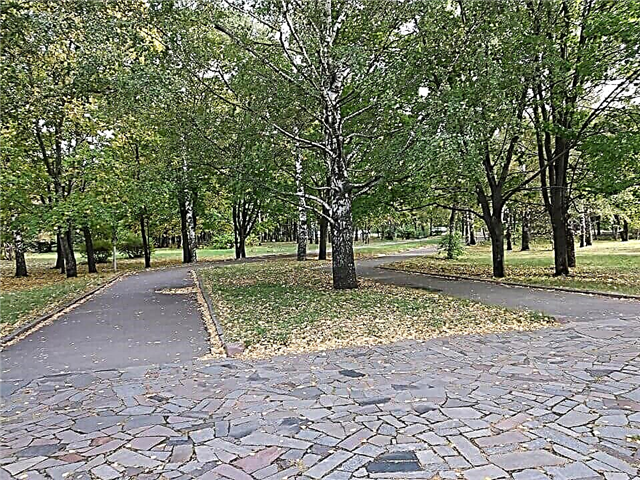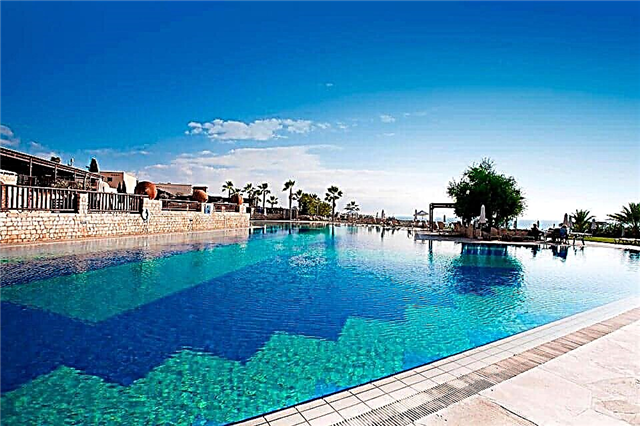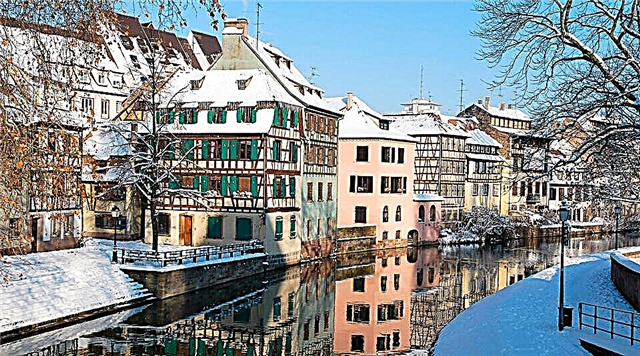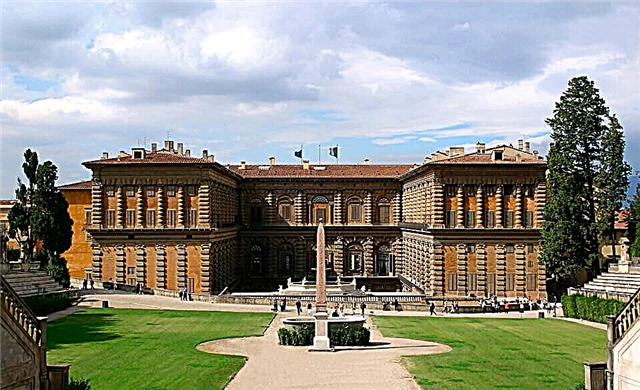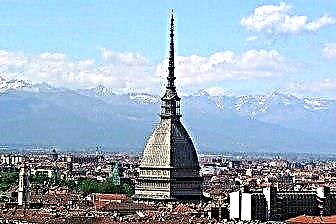Turin grew out of a small Roman colony. Since the 10th century, the city was ruled by the Dukes of Savoy, after the victory of the movement for the unification of Italy, for 4 years it was the capital of the Italian kingdom. During the reign of the Savoy dynasty, such architectural masterpieces as Palazzo Reale, Castle of Valentino and Villa della Regina appeared in Turin. In the XV-XVIII centuries. picturesque temples were erected, which now adorn the historic quarters of the city.
Turin is home to one of the best museums of Egyptian culture in the world, the shroud of Jesus Christ himself and a magnificent car collection with vintage cars. Also in Turin, the famous Juventus team was born, whose championship victories never cease to delight the fans.

The best hotels and hotels at affordable prices.
from 500 rubles / day
What to see and where to go in Turin?
The most interesting and beautiful places for walking. Photos and a short description.
Castello Square
The architectural ensemble of Piazza Castello was formed by the end of the 16th century. The architect A. Vitozzi worked on its appearance. The square is surrounded by buildings of the Royal Theater, the Palazzo Madama castle, the Royal Palace, the Armory, the government house and the library. From here, the four main streets of Turin diverge in different directions. Also on the square is the Cathedral of St. John the Baptist (San Giovanni Battista).

Piazza San Carlo
One of the main squares of Turin. It arose in the 17th century after the city became the capital of Savoy. Due to the new status, there was a significant expansion of the urban space. The final appearance of the area took shape by the middle of the 19th century, together with the installation of a monument to Duke Emmanuel Philibert, the ruler of Savoy. Piazza San Carlo was renovated in 2006 on the eve of the Turin Olympic Games.

Mole Antonelliana
A tall tower that dominates the cityscape. The structure is easily visible from anywhere in Turin. The tower was built by the ambitious architect A. Antonelliano in the 19th century. The master received an order from the Jewish community to build a synagogue, but he could not complete the grandiose project, as he died in the process. As a result, the Jews refused to further finance the work, and the city authorities bought the tower. In the XX century, a cinema museum was located on its territory.

Palazzo Reale
Royal Palace of the Savoyard royal family. The palazzo was rebuilt from the old episcopal palace by order of Duke Emmanuel Philibert in the 17th century. The graceful royal residence is considered one of the most elegant Baroque creations. The site is included in the UNESCO heritage lists. In one of the wings of the palazzo, there is an art gallery made up of paintings that once belonged to the dukes of Savoy.

Palazzo Madama
The palace is located in Piazza Castello in the central part of Turin. It was built in the 13th century on the site of Roman buildings. Over the long history of its existence, the palazzo has been used as a prison, guest castle, residence of dowager rulers, an art gallery and a meeting place for the Piedmont parliament. The building has two different facades. The first is made in the style of a medieval castle, the second - in the baroque style.

Palazzo carignano
A palace complex of impressive size, which was built in the 17th century for the family of the princes of Carignano, the youngest branch of the Savoy dynasty. It was here in 1820 that Victor Emmanuel II, the first king of a unified Italy, was born. In the 19th century, the parliament sat on the territory of the palace, now the building houses a museum. The palazzo was built of red brick in the Baroque style by G. Guarini.

Valentino castle
A French-style castle that was used as one of the residences of the Dukes of Savoy. The building was rebuilt in the 17th century at the behest of Christina of France. By the 19th century, the badly dilapidated castle was taken over by the local university. After restoration work, the Turin Motor Show of 1900 was held on its territory. Currently, the castle of Valentino houses the Faculty of Architecture of the University.

Villa della Regina
One of the many palaces of the Dukes of Savoy, built in the 16th century. The mansion was built for the brother of Victor Amadeus I - Maurice, but soon the widow of the ruler settled here, and the rebellious relative fled to Spain. The Dukes of Savoy owned the Villa della Regina until the second half of the 19th century, when the building was sold. In the middle of the 20th century, real estate, along with land, was transferred to the state.

Basilica of Superga
Picturesque baroque church of the 18th century, built by Victor Amadeus II according to the project of F. Juvarra. The ruler vowed at the top of the Superga hill in 1706 that if he defeated the French, he would build a temple in honor of the Virgin Mary. The result of the fulfillment of this vow was the construction of the basilica, as the French were eventually defeated. Many representatives of the Savoy dynasty rest on the territory of the temple.

Cathedral of John the Baptist
Turin Cathedral of the 15th century, erected on the site of a Roman amphitheater and three early Christian churches of the 6th-7th centuries. The temple is a famous pilgrimage site. The complex of the cathedral includes the Chapel of the Holy Shroud, where one of the most important Christian relics, the Turin Shroud, is kept. It is believed that the body of Jesus was wrapped in this piece of cloth after it was taken down from the cross. The cathedral was designed by B. di Francesco.

Church of Santuario della Consolata
A mid-17th century church built on the site of an earlier church designed by G. Guarini, one of the best masters of the Baroque era. The most valuable relic of the temple is the icon "Madonna and Child", which dates back to the 4th-5th centuries and is considered miraculous. Santuario della Consolata underwent several restorations in the 18th and 20th centuries. The observation area on the roof of the temple offers a magnificent view of Turin.

Church of the Gran Madre di Dio
The temple is located at the top of the Capuchin hill. It is believed to be standing on the very spot where the Holy Grail is hidden. Many superstitions and mystical legends are associated with the church. The building was built in the period 1827-31. in honor of the return from exile of the king of Sardinia, Victor Emmanuel I. The portico of the main entrance is supported by classical Corinthian columns, in general, the building resembles the Roman Pantheon.

Church of San Lorenzo
Temple of the 17th century, built according to the project of G. Gvarini and F. Yuvar. The baroque facade of the building in light yellow tones fits perfectly into the architectural ensemble of Piazza Castello. The external decoration of the church is distinguished by a large number of stucco moldings and decorative details. The building is crowned with an octagonal dome. The interior of the temple is decorated with valuable paintings, statues, sculptures and antique furniture.

Palatine gate
An antique gate dating back to the 1st century BC. In the era of the Roman Empire, they were the gateway to the city from the north. The Palatine Gate is located on the territory of the archaeological park - an excavation zone created in 2006. The statues of the emperors Octavian Augustus and Julius Caesar, installed opposite the gate, were created in 1934. They are copies of original sculptures that have not survived to this day.

Teatro Reggio
The opera house of Turin, created in the 18th century according to the project of F. A few years after the start of work, the theater was closed by order of the king, and a warehouse was placed in the building. Under Napoleon Bonaparte, the opera stage again began to fulfill its direct functions. In the XX century, the theater burned twice, which is why only the facade remained from the original building. After reconstruction, the renovated opera was opened in 1973. Maria Callas sang at the premiere.

Egyptian Museum
The largest collection in Europe dedicated to the culture and history of Egyptian civilization. In terms of the variety and richness of the exposition, the Egyptian Museum of Turin is second only to the museum of the same name in Cairo. The exhibition began with the private collection of Charles Emmanuel III, who was an avid collector of ancient Egyptian artifacts. The museum funds contain valuable papyri, mummies, statues, decorations from the tombs of the pharaohs and much more.

National Automobile Museum
The museum exhibits over 200 cars from different European countries. There are Italian cars of the late 19th century, Ferrari race cars, elegant Alfa Romeos, Rolls-Royce models, as well as cars participating in famous races of the early 20th century. The museum was established in 1932 by the Italian aristocrat and collector C. B. di Ruffia. Its exposition is included in the TOP-50 of the best museums in the world.

Museum of Oriental Art
The museum exposition is dedicated to the art of the countries of China, South and Southeast Asia, Tibet, Japan and Islamic states. The time period that the collection covers is 3000 BC. -XVIII-XIX centuries. The halls of the museum exhibit Chinese ceramics, Japanese wooden statues, rare manuscripts, sculpture, paintings, books, bronzes, Ottoman velvet and other valuable art and household items.

Juventus stadium
City football stadium, home arena of the renowned Juventus team. The complex was opened in 2011, it was built to replace the old arena "Delle Alpi", which no longer met the needs of players and fans. "Juventus" is designed for 41 thousand spectators, during its construction all the current requirements for safety and comfort were taken into account. Due to the special shape of the structure, the playing field is ideally illuminated.

Pelerina Park
City park in the western part of Turin, covering an area of about 83 hectares. The park was named after one of the teachers of the University of Turin - M. Carrara, who did not swear allegiance to Mussolini. The place is better known because of the unofficial name "pelerina" in honor of the cheese dairy of the same name, which is located nearby. The park has several soccer fields, a swimming pool, rollerblades and tennis courts.




